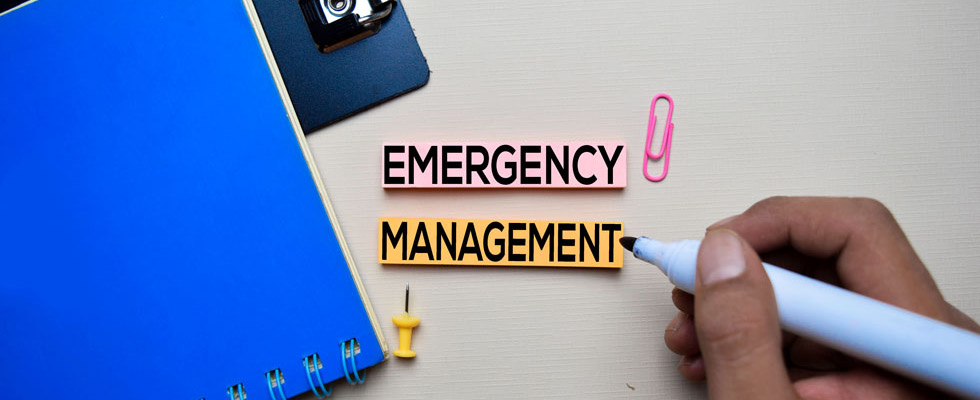
Propane emergency preparedness isn’t just a regulatory requirement — it’s a fundamental responsibility that protects employees, customers and entire communities. In the propane industry, every marketer faces the reality that emergencies can occur without warning, making comprehensive operational procedures and safety standards not just advisable, but critical for business continuity and public trust.
Safety-First Culture in Emergency Propane Operations
The cornerstone of effective emergency operations begins with establishing a safety-first culture throughout the organization. This means ensuring the safety of your drivers, customer service representatives, customers and community remains paramount in every decision and procedure.
When employees understand that their well-being and that of their customers takes precedence over normal business operations, they’re more likely to follow protocols and make sound decisions under pressure. This philosophy should permeate every aspect of operations, from routine deliveries to crisis response. Company leadership, from home office to local branches, must consistently demonstrate this commitment, providing adequate resources, training and support systems that enable employees to prioritize safety without fear of negative consequences.
Propane marketers face a unique set of potential emergencies that require specialized response procedures. Gas leaks represent perhaps the most serious and common emergency, with the potential for explosion, fire or asphyxiation. These incidents can occur during delivery, at customer locations or at storage facilities, each requiring specific response protocols.
Vehicle accidents involving propane delivery trucks present complex challenges, combining traditional traffic accident procedures with hazardous material considerations. The proximity of propane cylinders or bulk tanks to accident scenes requires immediate assessment of leak potential and evacuation procedures.
Environmental hazards, including insect stings and dog bites, while seemingly minor, can create serious medical emergencies for drivers working in remote locations. These incidents require immediate first-aid response and clear communication protocols to ensure rapid medical attention when needed.
Equipment failures, including cylinder valve malfunctions, delivery truck mechanical issues and storage system problems, can escalate into emergency situations requiring immediate response and specialized expertise.
Communication Is Essential in Emergency Response
Effective emergency response depends on clear, established communication chains that ensure information flows quickly to the right personnel. This begins with defining specific roles and responsibilities for different types of emergencies. Customer service representatives need immediate access to emergency contacts, including drivers, managers, home office staff when appropriate, and even local fire departments and medical services. Drivers require direct communication lines to dispatch and management, with backup communication plans discussed when primary systems fail.
Managing communication with customers, regulatory agencies, media and community members during emergencies requires predetermined protocols and designated spokespersons. Clear, accurate information sharing helps prevent panic and misinformation and demonstrates the company’s commitment to transparency and public safety.
The Role of Training in Emergency Preparedness
Regular, comprehensive training programs form the backbone of effective emergency preparedness. Training should cover both prevention strategies and response procedures, ensuring employees can recognize potential hazards before they become emergencies and respond appropriately when incidents occur.
Driver and service technician training must include hazard recognition, proper handling techniques for different types of propane containers, emergency shutdown procedures and basic first aid. Customer service representatives need training in emergency call handling, evacuation coordination and communication protocols.
Theoretical knowledge alone is insufficient for emergency preparedness. Regular training and practice scenarios help staff develop muscle memory and confidence in emergency procedures, reducing the likelihood that they’ll become overwhelmed by urgency during actual incidents.
These exercises should simulate realistic conditions and stress levels, including communication challenges and time pressures.
Tabletop exercises allow management teams to work through complex emergency scenarios, testing decision-making processes and identifying potential gaps in procedures. Full-scale drills involving multiple departments and external emergency services can help validate coordination efforts and identify areas for improvement.
Preparedness: The Key to Emergency Prevention
The most effective emergency response is preventing emergencies from occurring. This requires establishing rigorous operational standards for equipment maintenance, employee training and safety compliance. Regular inspection schedules for delivery vehicles, storage facilities and customer installations help identify potential problems before they become emergencies.
Standard operating procedures should address proper handling techniques for different types of propane containers, appropriate personal protective equipment for various tasks and clear guidelines for when to stop work and seek assistance. These procedures must be regularly updated based on incident reports, regulatory changes and industry best practices.
When emergencies do occur, predetermined response procedures ensure consistent, effective action. These procedures should address immediate safety measures, notification requirements, resource mobilization and recovery operations. Clear decision trees help employees determine appropriate responses based on specific circumstances and severity levels. Emergency response procedures must include provisions for working with local emergency services, including fire departments, police and emergency medical services. This includes providing these agencies with detailed information about propane hazards, facility layouts and available resources.
Comprehensive documentation of all incidents, regardless of severity, provides valuable information for improving emergency procedures and preventing similar occurrences. This documentation should include detailed accounts of what happened, appropriate photos and diagrams, how the emergency was handled, what worked well and what could be improved. Incidents should then be reviewed on a regular basis to see if any changes need to be made in policies and training plans.
Emergency procedures require regular review and updates to remain effective. This includes incorporating lessons learned from reviewing the incidents, changes in regulations, new equipment or technologies, and employee feedback.
Effective emergency operations for propane marketers require a comprehensive approach that combines prevention, preparedness, response and continuous improvement. By establishing clear procedures, providing thorough training and maintaining a culture that prioritizes safety above all else, propane marketers can fulfill their responsibility to protect employees, customers and communities while maintaining operational effectiveness.
The goal is not just regulatory compliance but creating an environment where everyone can go home safely each night, with peace of mind that they’ve done everything possible to prevent and respond to emergencies effectively.
Remember, in the propane industry, there are no small emergencies — only well-prepared responses that prevent small incidents from becoming major disasters.


